Immediate effect of fomentation on pulmonary function in patient with bronchial asthma:a case series
Background
Bronchial asthma (BA) is a chronic inflammatory disease characterized by narrowing of lower respiratory tract [1].The prevalence of BA has been increasing worldwide since 1970, affecting 4–7% of the population [2].Etiology of BA may include environmental factors such as dust, pollen, infectious agent such as respiratory syncytial virus with common triggering factors such as poor psychological health, endocrinal disorders, premenstrual syndrome and climatic factors [3, 4].Symptoms of BA include dyspnea, wheezing, chest tightness, bronchial hyper-responsiveness and reversible airflow obstruction [3].Diagnosis of BA remains quite complex due to its similarity in clinical features with other lung diseases, such as chronic obstructive pulmonary disease, chronic bronchitis, cardiac failure, hyperventilation syndrome, pulmonary tumor and emphysema [5].Conventional management of BA includes the usage of corticosteroids, long acting β-2 agonist, leukotriene receptor antagonist, anti-muscarinic agent, magnesium sulfate and bronchodilators[6].Hydrotherapy is a commonly used intervention in naturopathy system of medicine.Fomentation is documented to be beneficial in reducing pain, stress and joint stiffness [7, 8].Previous studies on BA with hot arm and foot bath one of the treatment modalities in hydrotherapy found to be effective in improving lung function but there was a lack of evidence regarding the effect of hot fomentation on the interscapular region and its efficacy in BA [9].This case series focuses on the immediate effect of fomentation and its effectiveness in improving lung function in patients with BA.
Who could have guessed that to ask for a rose in the middle of summer would cause so much misery42? But as I did the mischief43 it is only just that I should suffer for it
Case details
Ethical statement
All the cases were informed about the intervention and assessment procedures, prior to the intervention and informed consent obtained which was mentioned under the title “intervention”.
Case 1
A 19 years old female medical student visited outpatient department with chief complaints of respiratory wheezing and breathlessness for the past 5 days.She had a history of BA past six years (since 2015).She was presently under irregular medication intake with Foracort 200 capsule by using rotahaler and also taking asthalin for symptomatic relief, which is a long acting beta-2 agonist that results in broncho-dilation and reduces breathlessness immediately.In general, her symptoms aggravate during the winter season, especially at night, while consuming cold items and on exposure to the dust.No relevant family history of BA or any other respiratory illness.On inspection, there was no pallor, icterus, absence of swelling and lump;during auscultation, normal vesicular breath sound heard and in percussion dullness and hyper-resonance were absent.She attained menarche at the age of 13 and her menstrual cycle was regular with 30-day cycles.Her blood pressure was 110/76 mmHg, respiratory rate was 17 cycles/min, oxygen saturation was 96%, height was 150 centimeters, weight was 50 kilograms and her body mass index (BMI)was 21.7 kg/m
.
Case 2
An 18 years old female student visited our outpatient department with the chief complaints of frequent sneeze and difficulty in breathing for last one year.She had a history of BA for past 3 years.She was under medication montek-levocetirzine (Leukotriene antagonist, which results in reduced mucus secretion, bronchodilation and suppression of bronchial inflammation) and asthalin (long acting β-2 agonist results in bronchodilation) during severe symptoms for symptomatic relief only and not under any regular medication.Her symptoms aggravate during winter season and night.She had no relevant family history of any respiratory illness.On inspection, the patient has no pallor, icterus or cyanosis.On auscultation of breath, sound was heard with no adventitious sound and on percussion, no hyper resonance or dullness was observed.On physical examination, her vitals are stable with a heart rate of 82 bpm, blood pressure of 122/78 mmHg,respiratory rate of 20 cycles/min and O
saturation of 90%.Her weight was 62 kilograms and her BMI was 23.4 kg/m
.
Case 3
Case 2: FVC (L/min) from 91% to 99%, FEV1 (L/min) from 78% to 86%, FEF (25–75%) (L/min) from 47% to 56% and PEFR (L/Sec) 74%to 79%, FEV1/FVC ratio from 85% to 87% (See Table 2, Figure 3).
Case 3: FVC (L/min) from 76% to 80 %, FEV1 (L/min) from 66% to 72%, FEF (25–75%) (L/min) from 45% to 52% and PEFR (L/Sec) 79%to 84%, FEV1/FVC ratio from 87% to 90% (See Table 3, Figure 4).
Fomentation procedure was explained to the patients and a written informed consent was obtained before baseline assessment.Pulmonary function test was taken before the beginning of the intervention in a sitting position.While giving hot fomentation, the patient was made to lie comfortably on a couch in prone position,arms were folded and head rested over the folded arms, for a duration of 20 minutes without any discomfort.Hot water (temperature e 110℉± 2℉) was filled in a rubber bag and mouth of the bag was closed with a suitable lid.The hot water bag was then placed over the inter-scapular region for a period of 20 min.Fomentation bag was covered with a woolen cloth (Figure 1).After 20 minutes, fomentation was removed and pulmonary function test was performed immediately after the removal of application in sitting position [10].
Intervention
Last year a lady in the north of England was astonished to receive an extremely surprising Valentine s present from her husband of 28 years, a live donkey.
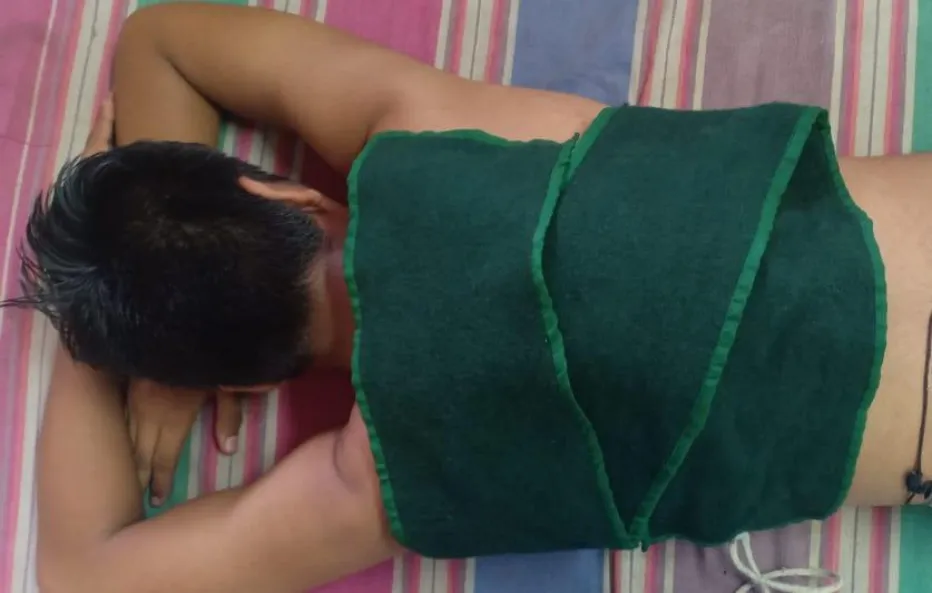
Pulmonary function test
Pulmonary Function Test (PFT) was performed using RMS Helios 401.Calibration was done before the assessment in sitting position.A minimum of three trial session was performed and the best of three readings was taken for the analysis.Forced vital capacity (FVC),forced expiratory volume in the first second (FEV1), forced expiratory volume in the first second and forced vital capacity ratio(FEV1/FVC),peak expiratory flow rate (PEFR) and mean forced expiratory flow during the middle half of FVC (FEF 25–75%) were assessed using spirometry.
Application of hot fomentation to the inter-scapular region for the period of 20 minutes increased in pulmonary function parameters.
Results and discussion
I really do not care whether you consent to my marriage with your daughter or not, but I am bound to ask your consent, on account of a certain meddling81 Fairy called Melinette, with whom I have reason for wishing to keep on good terms
Case 1: FVC (L/min) from 69% to 81%, FEV1 (L/min) from 64% to 74%, FEF (25–75%) (L/min) from 40% to 44% and PEFR (L/Sec) 79%to 82%.There was slight reduction in FEV1/FVC ratio from 93% to 91% (See Table1, Figure 2).

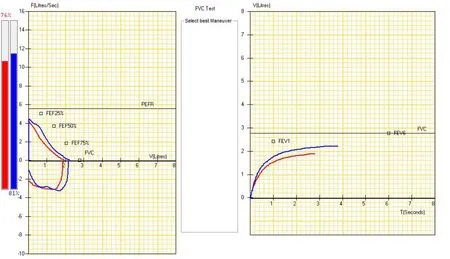
A 26 years female working as an advocate visited OPD with the chief complaints of wheezing and dyspnea in early morning for past 10 days.She was a known case of BA for past 18 years.Under medication seroflo 100, a combination of salmeterol (long acting β-2 agonist causes bronchodilation and fluticasone propionate (corticosteroid which results in bronchodilation and reduction of bronchial inflammation) during acute attack of asthma only.Her symptoms aggravated on exposure to dusts and cold climate.On inspection, the patient has no pallor, icterus, clubbing or cyanosis.On auscultation,an expiratory wheeze was heard.On percussion, no hyper resonance or dullness was observed.Her vital data are stable with a pulse rate of 88 bpm, blood pressure of 126/84 mmHg, respiratory rate of 22 cycles/min and O
saturation 91%.Her weight was 68 kilograms and BMI was 24.9 kg/m
.

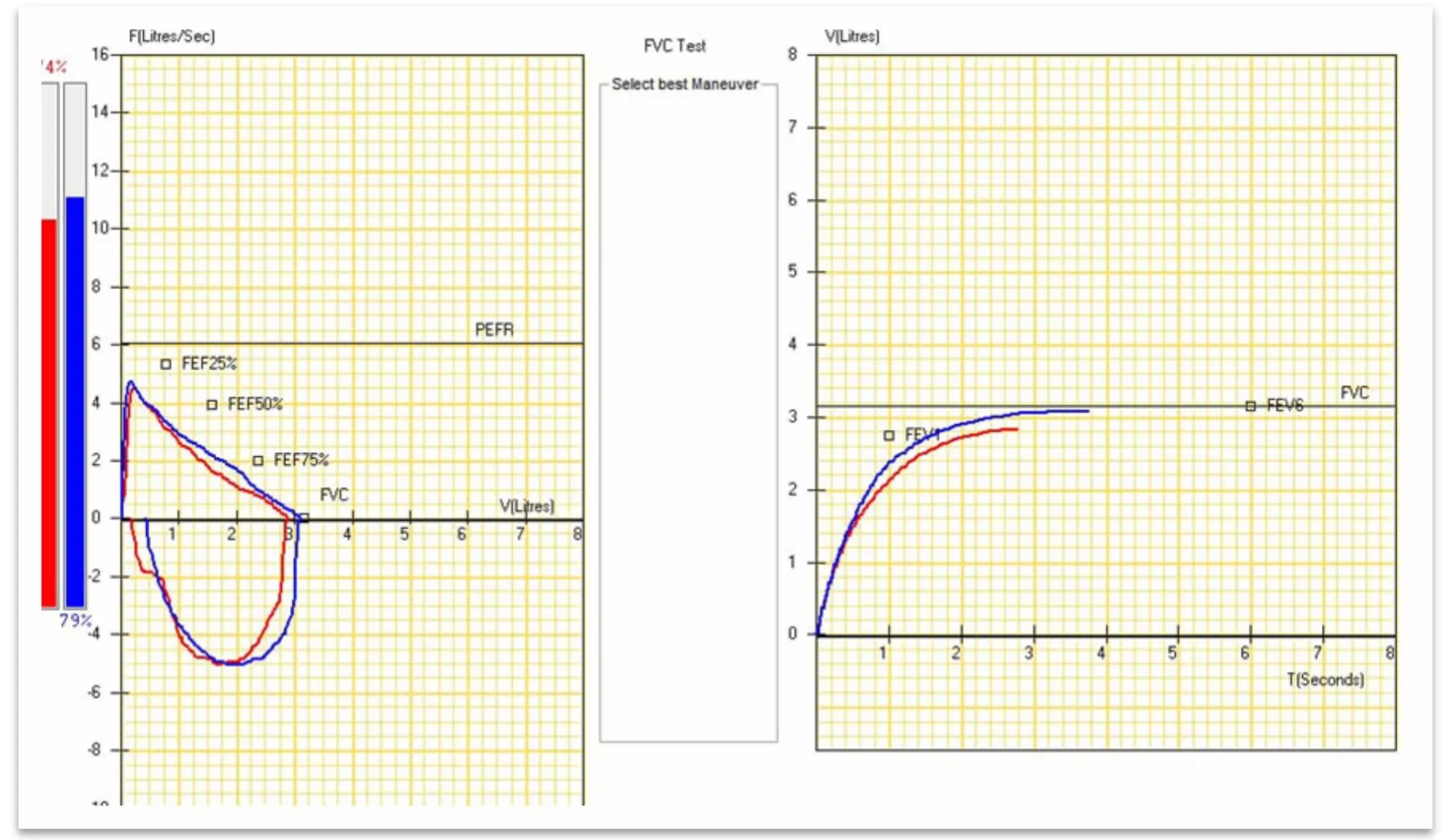
She knew this was the last evening she should ever see the prince, for whom she had forsaken119 her kindred and her home; she had given up her beautiful voice, and suffered unheard-of pain daily for him, while he knew nothing of it
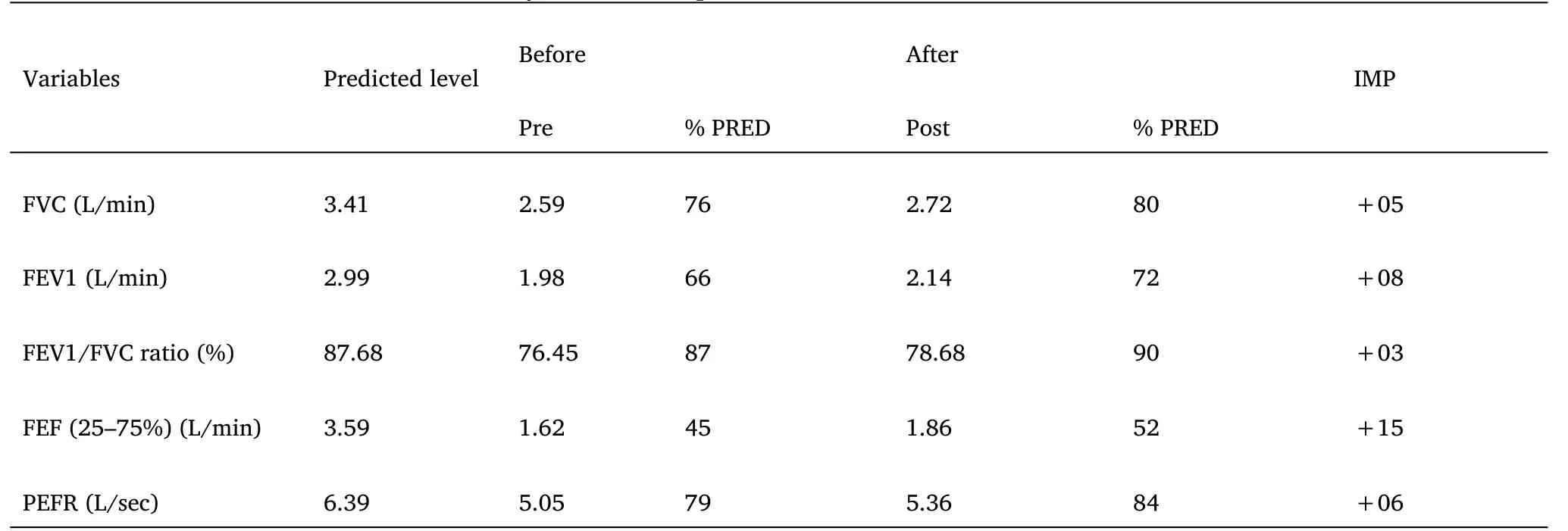
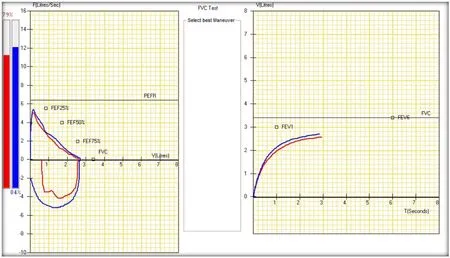
Fomentation was observed to be effective in improving lung function in the patients with BA.To our knowledge, this is the first ever recorded report on the immediate effect of fomentation on pulmonary function in BA.The main aim of management for asthma would be to relieve symptoms, reduce the risk of exacerbations and persistent airflow limitation.This could be possible by applying the fomentation intervention to the inter-scapular region, which is reflex area of the lungs related to the first to fourth dorsal ganglion.Fomentation might induce stimulation of sympathetic nervous system resulting in broncho-dilation and it may be the main reason for the improvement in the PFT variables [10].
Previous study on hot application in the form of chest pack also showed significant improvement in PEFR which will add strength to our findings [11].PEFR and FEV1 are the main PFT variables reflecting the severity of obstruction and International Consensus Guidelines recommended improvement in these parameters to assess the obstruction of air flow or severity of disease [12].In addition to that, improvement in lung function can be due to elimination of pulmonary congestion and redirecting the blood to peripheral circulation [13].
Fomentation is not “one-size-fits-all” but instead should be adjusted based on the patient need and severity of the condition.Since there is no scientific back up of hot fomentation on BA,this case report will be unique in its own therapeutic standard.Further large scale randomized control trial supports our findings and confirms the specific mechanism of action.
Conclusion
Fomentation could be used as an effective and supportive treatment to improve pulmonary function in patients with BA.Future experimental studies would give more insights about the intervention and also help substantiate our findings.
1.Halim A, Alam T, Ali MY, et al.Prospective study of bronchial asthma.
.2011;6(2):100–103.https://doi.org/10.3329/fmcj.v6i2.9211
2.Pal R, Dahal S, Pal S.Prevalence of bronchial asthma in Indian children.
.2009;34(4):310–316.https://doi.org/10.4103/0970-0218.58389
3.Quirt J,Hildebrand KJ,Mazza J,Noya F,Kim H.Asthma.
.2018;14(Suppl 2):50.https://doi.org/10.1186/s13223-018-0279-0
4.D’amato G, Liccardi G, D’amato M, Holgate S.Environmental risk factors and allergic bronchial asthma.
.2005;35(9):1113–1124.https://doi.org/10.1111/j.1365-2222.2005.02328.x
5.Lommatzsch M, Virchow JC.Severe asthma: definition,diagnosis and treatment.
.2014;111(50):847–855.https://doi.org/10.3238/arztebl.2014.0847
6.Agarwal R, Dhooria S, Aggarwal AN, et al.Guidelines for diagnosis and management of bronchial asthma:joint ICS/NCCP(I) recommendations.
.2015;32(Suppl 1):S3–S42.https://doi.org/10.4103/0970-2113.154517
7.Manna M, Podder L, Devi S.Effectiveness of hot fomentation versus cold compression on breast engorgement among postnatal mothers.
.2016;3(1):13–17.https://www.researchgate.net/publication/312552225_
8.Nagata H, Watada J, Yushi I, et al.Hot fomentation of the lower-back for stress relief in students preparing for a national examination of clinical medical technologist.
.2012;16:13–20.https://doi.org/10.1007/978-3-642-29920-9_2
9.Maheshkumar K, Pandiaraja M, Venugopal V, Poonguzhali S,Sundareswaran L.Effects of hot foot and arm bath in bronchial asthma:A single case report.
(
).2020;42:101651.https://doi.org/10.1016/j.foot.2019.10.006
10.Kellogg JH.
(2
edition).National Institute of Naturopathy.Pune, India;2005.ISBN: 157258209-X
11.Manjuladevi T, Mooventhan A, Manjunath NK.Immediate effect of hot chest pack on cardio-respiratory functions in healthy volunteers: a randomized cross-over study.
.2018;5(2):63–68.https://doi.org/10.1016/j.aimed.2017.12.006
12.Choi IS, Koh YI, Lim H.Peak expiratory flow rate underestimates severity of airflow obstruction in acute asthma.
.2002;17(3):174–179.https://doi.org/10.3904/kjim.2002.17.3.174
13.Nomoto S, Shibata M, Iriki M, Riedel W.Role of afferent pathways of heat and cold in body temperature regulation.
.2004;49(2):67–85.https://doi.org/10.1007/s00484-004-0220-8
